LC/SC/FC/ST Simplex Multimode OM1/OM2/OM3/OM4 0.9mm Fiber Optic Pigtail
Deskripsyon sa Produkto
Ang fiber optic nga pigtail usa ka fiber optic nga kable nga gitapos sa usa ka pabrika nga gi-install nga konektor sa usa ka tumoy, gibiyaan ang pikas tumoy nga natapos.Busa ang connector nga bahin mahimong masumpay sa mga ekipo ug ang pikas nga bahin natunaw sa optical fiber cables.Ang fiber optic nga pigtail gigamit aron tapuson ang fiber optic nga mga kable pinaagi sa fusion o mekanikal nga splicing.Ang taas nga kalidad nga mga kable sa pigtail, inubanan sa husto nga mga gawi sa fusion splicing nagtanyag sa labing kaayo nga pasundayag nga posible alang sa mga pagtapos sa fiber optic cable.Ang fiber optic pigtails kasagarang makita sa fiber optic management equipment sama sa ODF, fiber terminal box ug distribution box.
Standard 900μm Buffered Fiber Fiber optic pigtail mao ang usa ka importante nga component nga sagad gigamit sa fiber optic network.Kini adunay fiber connector sa usa ka tumoy, ug ang lain gigamit sa pagtapos sa fiber optic cables pinaagi sa fusion o mechanical splicing.
Ang fiber optic nga mga pigtail kay kasagarang gigamit sa pag-splice sa fiber aron kini makonektar sa patch panel o kagamitan.Nagpakita usab sila usa ka mahimo ug kasaligan nga solusyon alang sa dali nga pagtapos sa fiber, epektibo nga makatipig oras sa pag-opera ug gasto sa pagtrabaho.
Ang fiber optic nga mga pigtails naghatag usa ka paspas nga paagi aron makahimo mga aparato sa komunikasyon sa uma.Gidisenyo kini, gigama ug gisulayan sumala sa protocol ug pasundayag nga gidikta sa mga sumbanan sa industriya, nga makatagbo sa imong labing higpit nga mga detalye sa mekanikal ug pasundayag.
Nagpakita sa usa ka tipikal nga 900μm nga hugot nga buffered isip default, kini sayon alang sa fusion.
Detalye sa Produkto
| Konektor A | LC/SC/FC/ST | Konektor B | Wala mahuman |
| Fiber Mode | OM1 62.5/125μm;OM2/OM3/OM4 50/125μm | Ihap sa Fiber | Simplex |
| Grado sa Fiber | Bend Insensitive | Minimum nga Bend Radius | 7.5 mm |
| Polish nga Type | UPC | Diametro sa kable | 0.9 mm |
| Cable Jacket | PVC (OFNR), LSZH, Plenum(OFNP) | Kolor sa Kable | Aqua, Kahel o Nahiangay |
| wavelength | 850/1300nm | Kalig-on | 500 ka beses |
| Pagkawala sa Pagsal-ot | ≤0.3 dB | Pagkabaylo-baylo | ≤0.2 dB |
| Pagkawala sa pagbalik | ≥30 dB | Pagkurog | ≤0.2 dB |
| Operating Temperatura | -40~75°C | Temperatura sa Pagtipig | -45~85°C |
Mga Feature sa Produkto
● Grade A Precision Zirconia Ferrules Pagsiguro sa makanunayon nga ubos nga pagkawala
● Ang mga connector makapili ug PC polish, APC polish o UPC polish
● Ang matag cable 100% gisulayan alang sa ubos nga pagsal-ot sa pagkawala ug pagbalik sa pagkawala
● Customized gitas-on, Cable Diameter ug Cable kolor anaa
● OFNR (PVC), Plenum(OFNP) ug Low-Smoke, Zero Halogen(LSZH)
Gi-rate nga mga kapilian
● Gipakunhod ang Pagkawala sa Insertion hangtod sa 50%
● Simplex Multimode OM1 62.5/125μm, OM2/OM3/OM4 50/125 0.9mm Diameter fiber cable
● 850/1300nm Operating Wavelength
● Gigamit kini aron makab-ot ang tukma nga pag-mount sa katukma nga pag-align sa fiber optical nga mga sangkap.
● Kaylap nga gigamit sa CATV, FTTH/FTTX, telecommunication network, premise installations, data processing networks, LAN/WAN network, ug uban pa.
LC/UPC Multimode OM1 62.5/125 Simplex 0.9 mm Fiber Optic Pigtail
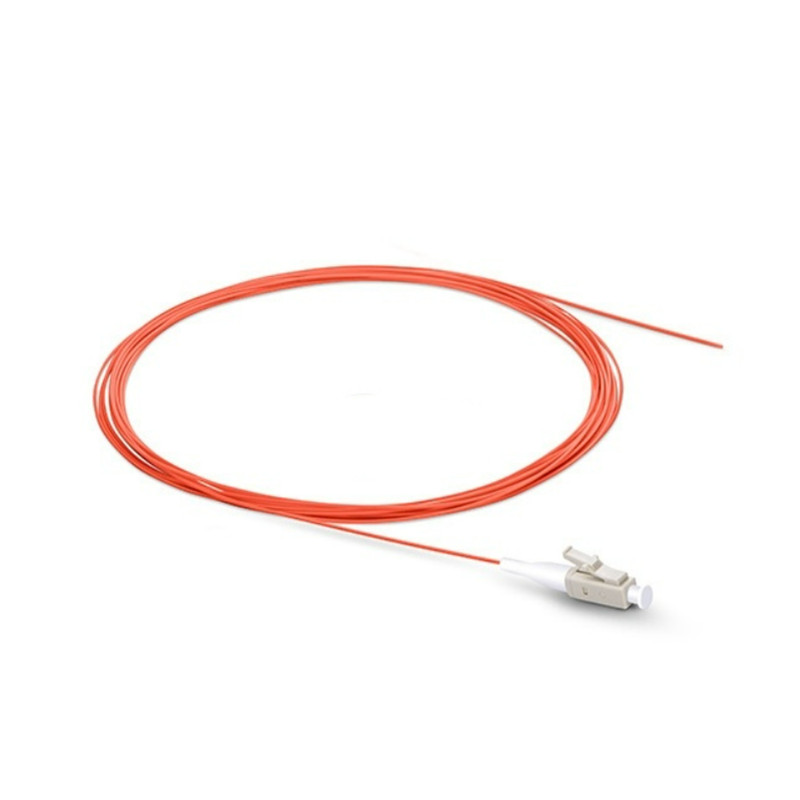
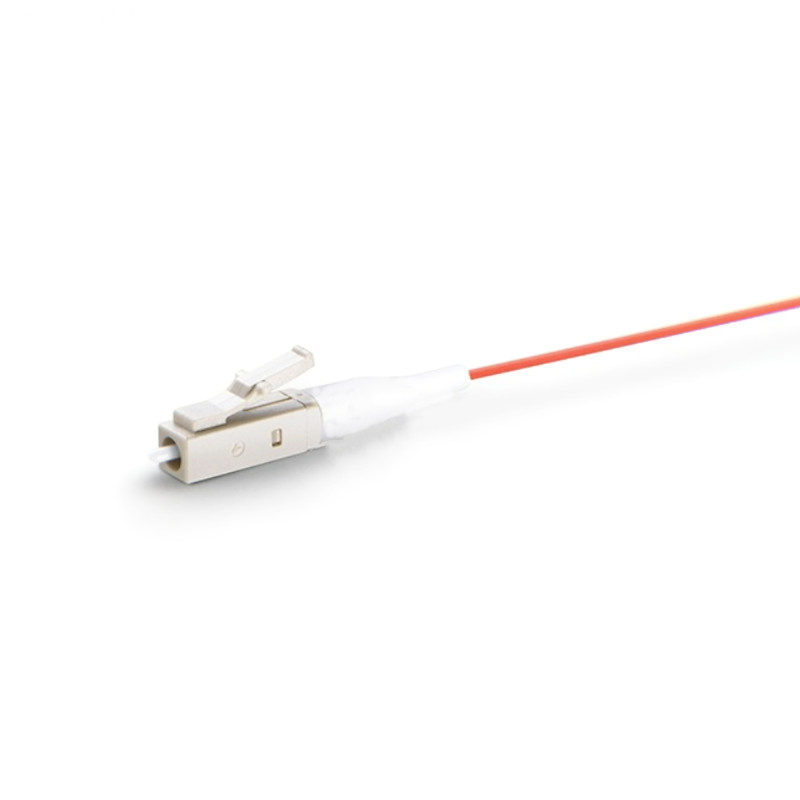
LC/UPC Multimode OM3/OM4 50/125 Simplex 0.9 mm Fiber Optic Pigtail
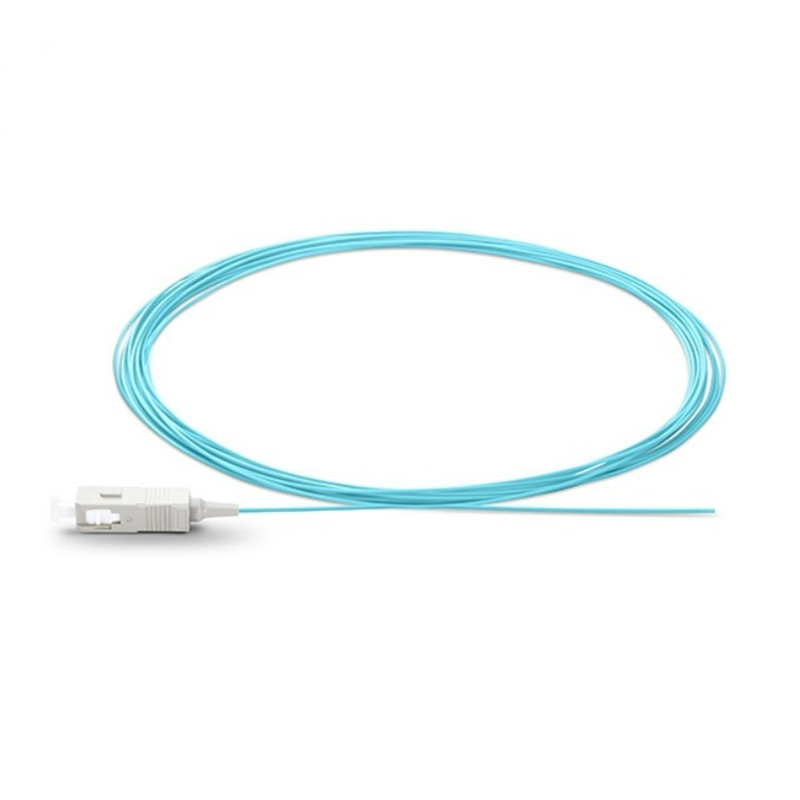
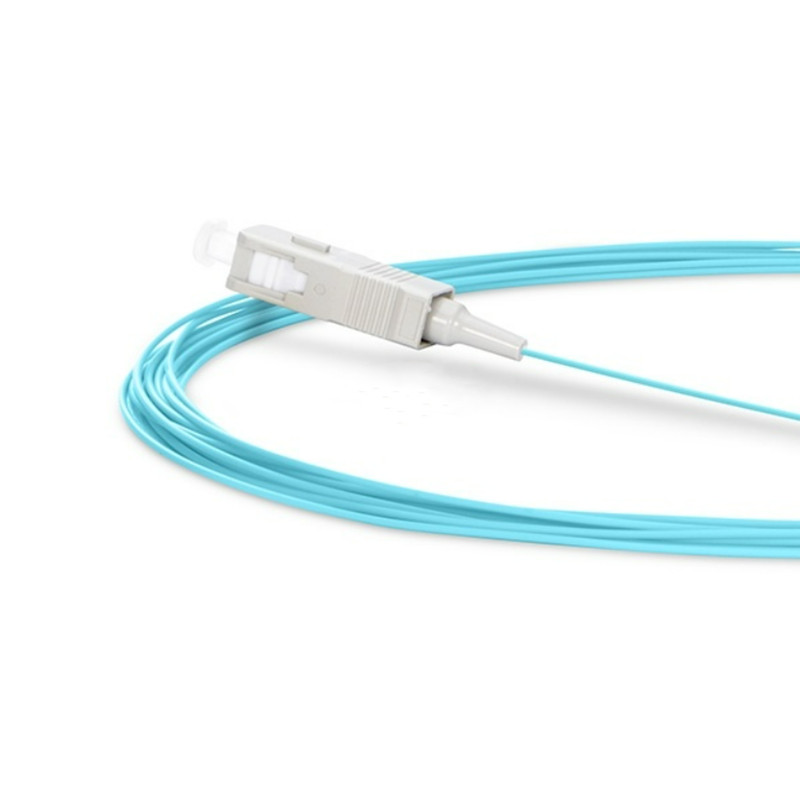
LC/UPC Multimode OM3/OM4 50/125 Simplex 0.9 mm Fiber Optic Pigtail
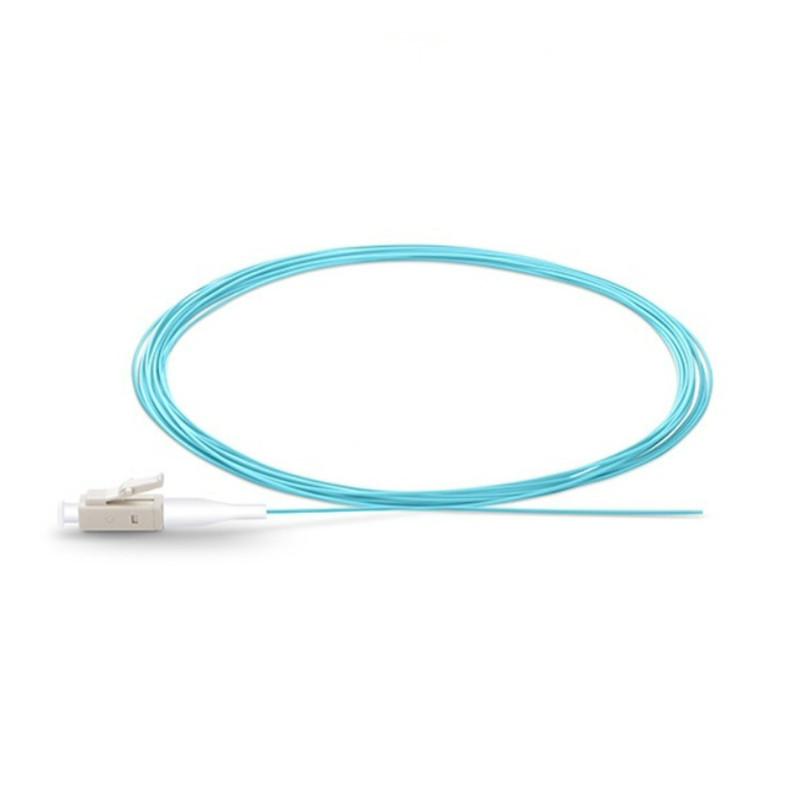

LC/UPC Multimode OM2 50/125 Simplex 0.9 mm Fiber Optic Pigtail

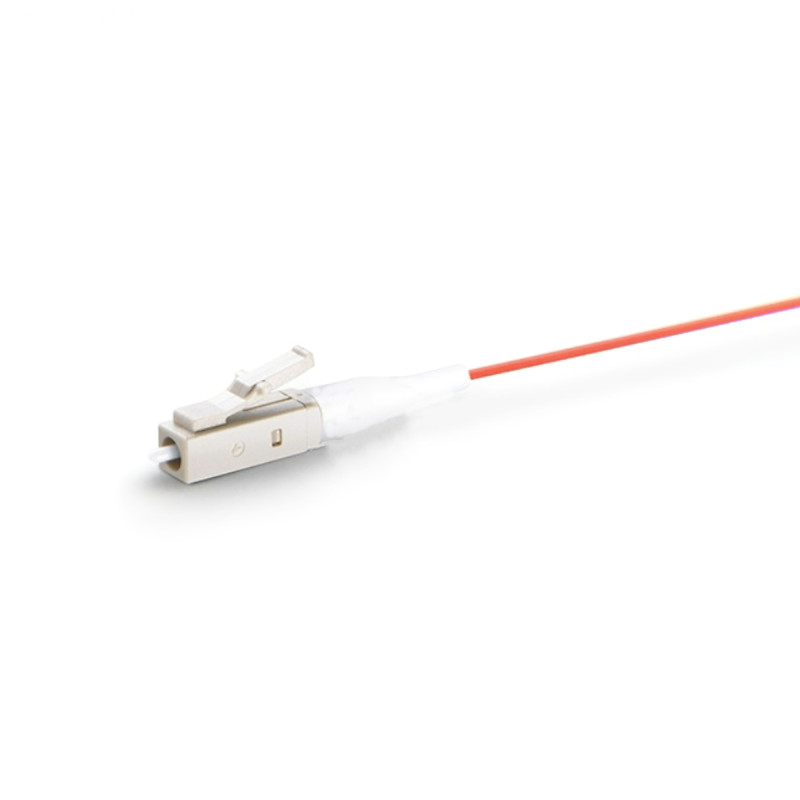
Nahiangay nga Type sa Konektor: LC / SC / FC / ST

Fiber Optic Pigtail - Maayo alang sa Splicing
Gigamit kini aron makab-ot ang tukma nga pag-mount sa katukma nga pag-align sa mga sangkap nga fiber optical
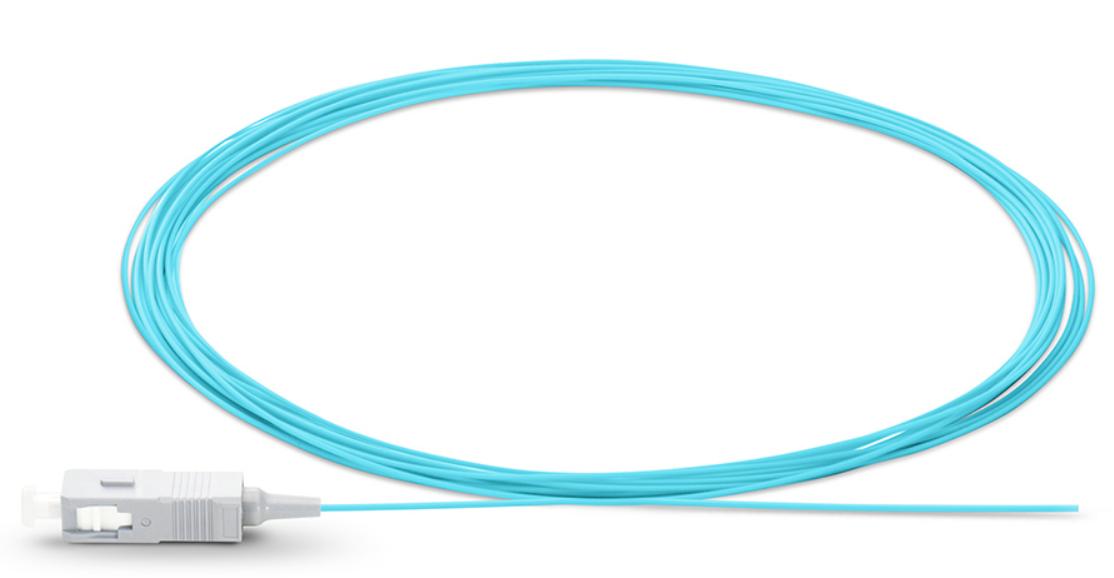

Zirconia Ceramic Ferrule

Ang 0.9mm nga kable nga magamit alang sa mga aplikasyon sa high density splicing
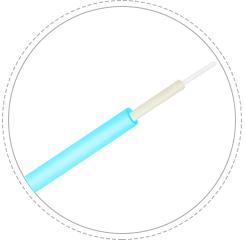
Hugot nga buffer pigtail para sa kadali sa pagdugtong
Giunsa Paghubo ang Fiber Optic Pigtail gamit ang Tri-Hole Fiber Stripper

OM1 VS OM2
● Ang OM1 nga kable kasagaran adunay dala nga orange nga jacket ug adunay kinauyokan nga gidak-on nga 62.5 micrometers (µm).Makasuporta kini sa 10 Gigabit Ethernet sa gitas-on nga 33 metros.Kini kasagarang gigamit alang sa 100 Megabit Ethernet nga mga aplikasyon.
● Ang OM2 aduna usab gisugyot nga kolor sa jacket nga orange.Ang kinauyokan nga gidak-on niini mao ang 50µm imbes nga 62.5µm.Gisuportahan niini ang 10 Gigabit Ethernet sa gitas-on hangtod sa 82 metros apan mas sagad nga gigamit alang sa 1 Gigabit Ethernet nga mga aplikasyon.
Diametro: Ang kinauyokan nga diametro sa OM1 mao ang 62.5 µm, Ang kinauyokan nga diametro sa OM2 mao ang 50 µm
Kolor sa Jacket: Ang OM1 ug OM2 MMF sa kasagaran gihubit sa usa ka Orange nga dyaket.
Optical Source: Ang OM1 ug OM2 kasagarang naggamit sa LED nga tinubdan sa kahayag.
Bandwidth: Sa 850 nm ang minimum nga modal bandwidth sa OM1 kay 200MHz*km, sa OM2 kay 500MHz*km
OM3 VS OM4
● Ang OM3 fiber adunay gisugyot nga kolor sa jacket nga aqua.Sama sa OM2, ang kinauyokan nga gidak-on niini 50µm.Gisuportahan niini ang 10 Gigabit Ethernet sa gitas-on hangtod sa 300 metros.Gawas sa OM3 makahimo sa pagsuporta sa 40 Gigabit ug 100 Gigabit Ethernet hangtod sa 100 metros.10 Gigabit Ethernet ang kasagarang gamit niini.
● Ang OM4 usab adunay gisugyot nga kolor sa jacket nga aqua.Kini usa ka dugang nga pag-uswag sa OM3.Naggamit usab kini og 50µm core apan gisuportahan niini ang 10 Gigabit Ethernet sa gitas-on hangtod sa 550 metros ug gisuportahan niini ang 100 Gigabit Ethernet sa gitas-on hangtod sa 150 metros.
Diametro: Ang kinauyokan nga diametro sa OM2, OM3 ug OM4 kay 50 µm.
Kolor sa Jacket: Ang OM3 ug OM4 kasagarang gihubit sa usa ka Aqua jacket.
Optical Source: Ang OM3 ug OM4 kasagaran naggamit sa 850nm VCSEL.
Bandwidth: Sa 850 nm ang minimum nga modal bandwidth sa OM3 kay 2000MHz*km, sa OM4 kay 4700MHz*km
Giunsa pagpili ang Multimode Fiber?
Ang mga multimode fibers makahimo sa pagpadala sa lain-laing mga gilay-on nga gilay-on sa lain-laing mga data rate.Mahimo nimong pilion ang labing haum sumala sa imong aktwal nga aplikasyon.Ang max multimode fiber gilay-on nga pagtandi sa lain-laing mga data rate gipiho sa ubos.
| Tipo sa Fiber Optic Cable | Distansya sa Fiber Cable | ||
| Paspas nga Ethernet 100BA SE-FX | 1Gb Ethernet 1000BASE-SX | 1Gb Ethernet 1000BA SE-LX | |
| OM1 | 200m | 275m | 550m (mode conditioning patch cable gikinahanglan) |
| OM2 | 200m | 550m | |
| OM3 | 200m | 550m | |
| OM4 | 200m | 550m | |
| OM5 | 200m | 550m | |
| Tipo sa Fiber Optic Cable | Distansya sa Fiber Cable | |||
| 10Gb Base SE-SR | 25Gb Base SR-S | 40Gb Base SR4 | 100Gb Base SR10 | |
| OM1 | / | / | / | / |
| OM2 | / | / | / | / |
| OM3 | 300m | 70m | 100m | 100m |
| OM4 | 400m | 100m | 150m | 150m |
| OM5 | 300m | 100m | 400m | 400m |
Pagsulay sa Pagganap

Mga Hulagway sa Produksyon
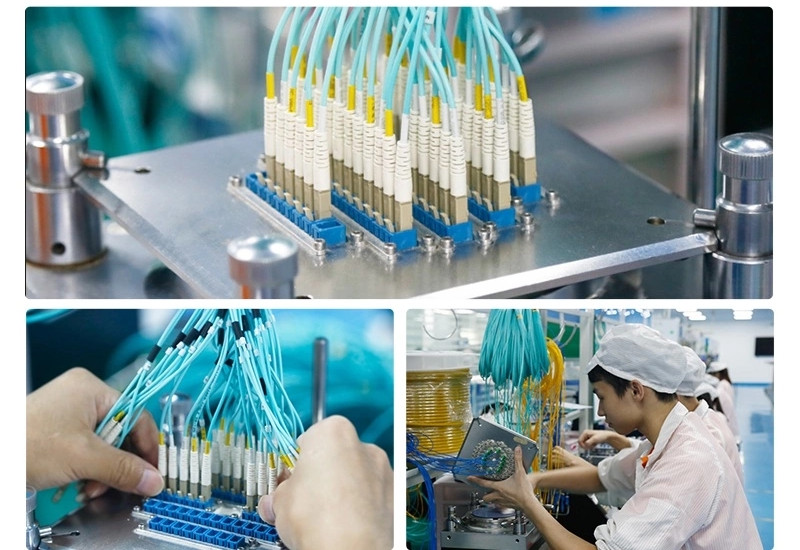
Mga Larawan sa Pabrika









